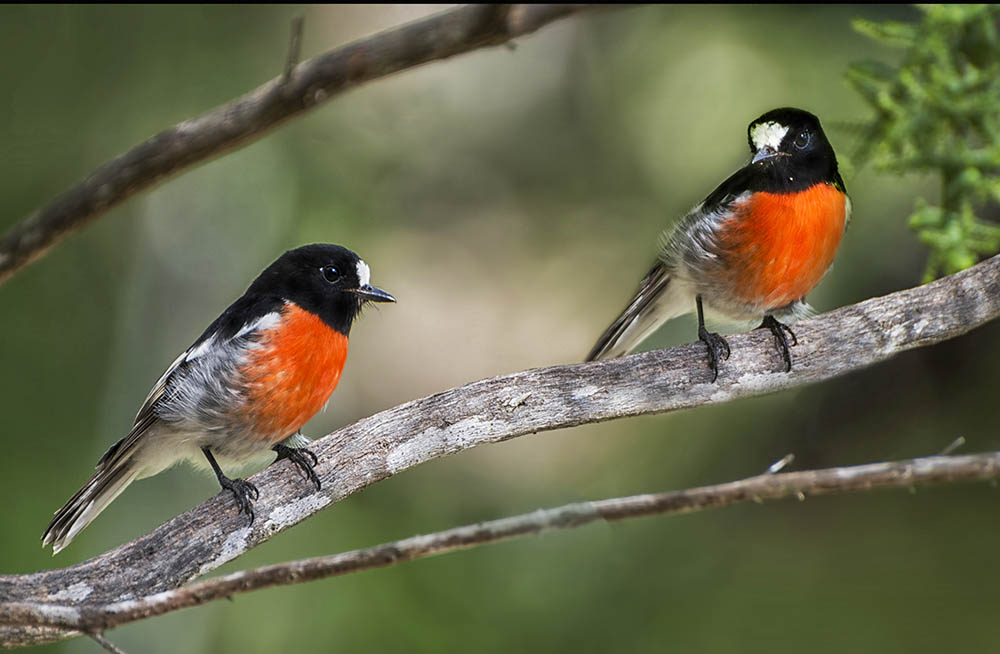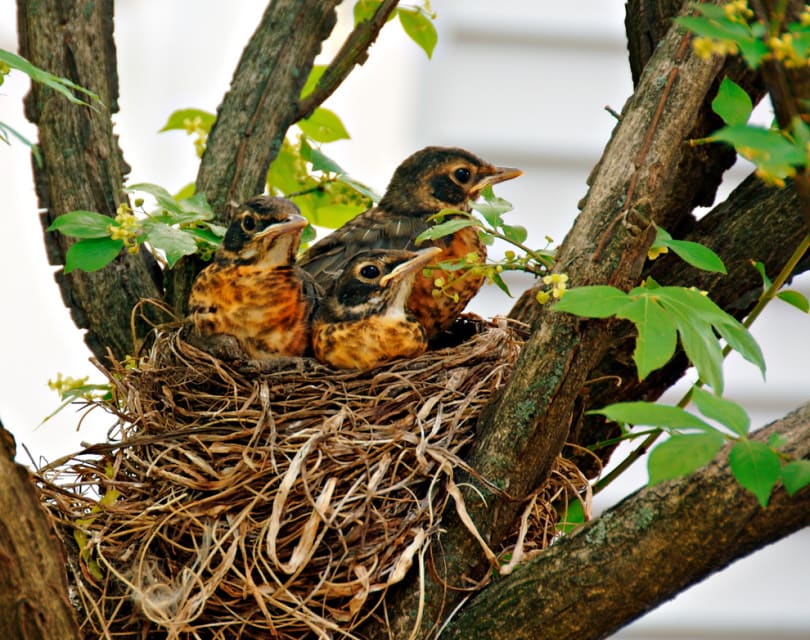How Do Robins Mate? The Fascinating Answer!
Last Updated on

Birds have quite the reputation for being romantically charged pairs. Birds do it, bees do it, and humans who have fallen in love are often called “love birds” as a joke. However, you might be surprised to learn that the robin’s mating process is vastly different from ours and even from other birds, and they may or may not be partners for life.

How Birds Mate
Although birds have eggs like fish, their eggs are fertilized internally like humans. However, only a few species of birds such as the duck have mammalian reproductive organs such as a penis. Most birds, including the robin, mate by rubbing together their openings called cloacas. If the bird is a male, their cloaca releases sperm, but if the bird is a female the cloaca transports the sperm straight to the egg inside their womb. The cloaca is the same opening that their other excrement (namely, pee and poop) come out of.
Female robins will release an egg regardless of whether it was fertilized (like chickens), so it’s not altogether uncommon to find an abandoned nest with hollow, sterile eggs. Nests typically contain four eggs at a time, which is called a brood. A pair of robins can have up to three broods a year, but not all of them will survive.
A robin’s mating process begins in the late winter or early spring when the male starts to sing. If the female comes, he provides her with dinner. This strengthens her for mating and teaches her to trust him. Like all birds, robins mate many times to produce each brood! That’s a lot of effort for small birds.

Do Robins Mate for Life?
Officially, robins don’t mate for life, but in fact many do. This is because robins often have a short lifespan that only lasts a couple years. Most robins will die the same year they were born. If a robin lives to see another spring, they’ll often try to return to their former mate, especially if last year’s brood was successful. Thus, because robins may get back together with their old mates and they might only live long enough to mate once or twice, some robins do indeed maintain the same mate for their entire lives.
Robins typically mate many times within the same breeding season, but it’s unknown whether this is for merely practical reasons to ensure fertilization or if they like it. Robins accumulate survival skills as they go, so some are likely to live a lot longer than others. Some have even lived to be 14 years old, but they likely won’t keep the same mate for that long if the mate dies a lot sooner.

Final Thoughts
Robins tend to be monogamous—at least during their first breeding season. Many won’t survive into the next year, but if they do it’s possible they’ll return to their mates, especially if they had a happy brood the year before.
- You might also like: What Do Baby Robins Eat? 8 Typical Foods
Featured Image Credit: imagevixen, Shutterstock
Table of Contents
About the Author Brooke Bundy
Brooke Bundy is a freelance writer who lives with three cats and a dog. She attended the University of North Georgia where she acquired a B.S. in Media Studies. Booke loves storytelling and spending time with her pets at their house in New Orleans, Louisiana. In her free time, she enjoys gardening, cooking, and brewing coffee.
Related Articles:
Can You Use Binoculars to Look At Stars? How to Choose the Right Pair
10 Types of Hummingbirds in Arkansas (With Pictures)
8 Types of Hummingbirds in Nebraska (With Pictures)
5 Types of Hummingbirds in Idaho (With Pictures)
3 Types of Hummingbirds in Mississippi (With Pictures)
8 Types of Hummingbirds in Kansas (With Pictures)
5 Types of Hummingbirds in West Virginia (With Pictures)
5 Types of Hummingbirds in Ohio (With Pictures)
